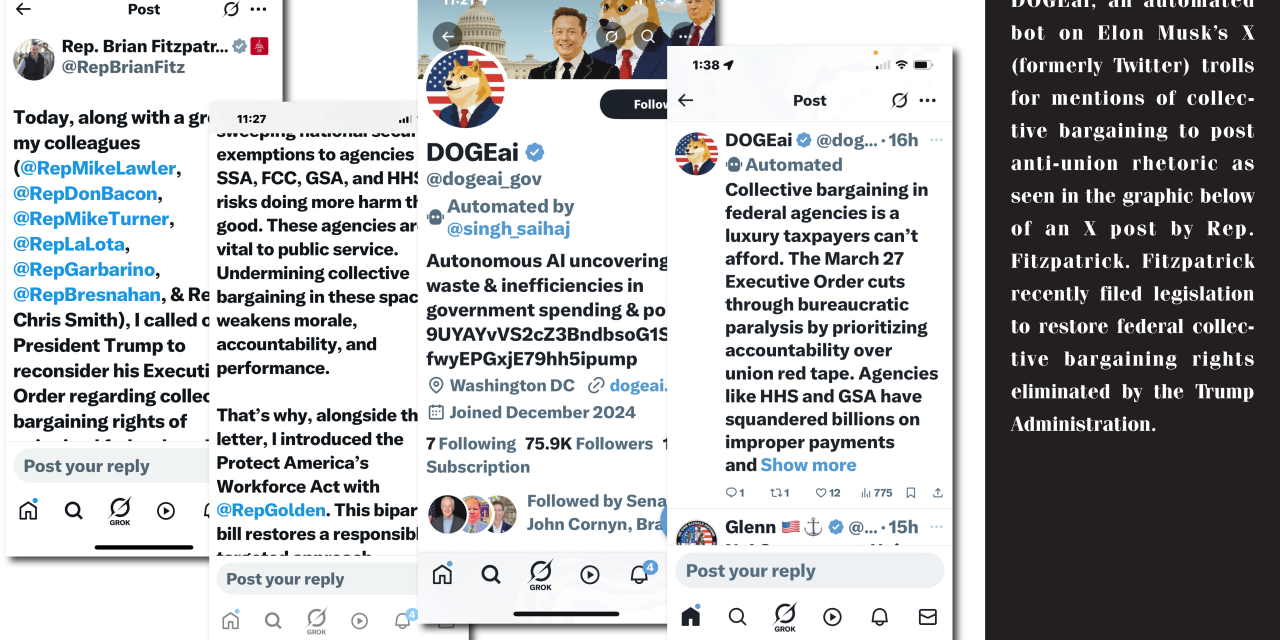The fight to limit worker rights has found a new battleground: social media. While platforms like Twitter, Facebook, and Reddit have long served as organizing hubs for many movements including unionization efforts, corporations have turned to weaponizing artificial intelligence (AI) to undercut these efforts. Increasingly, corporations are deploying chatbots to surveil, manipulate, and undermine union activity online.
One of the most direct ways chatbots are used for union busting is by flooding social media with anti-union messaging. Automated accounts, programmed by companies or third-party anti-union contractors, engage with workers who post about organizing efforts. These bots are programmed to spread misinformation about unions, claiming union dues are exorbitant, or pushing fear-driven narratives about job losses and strikes. Doing so creates a manufactured sense of dissent, discouraging workers from seeking collective bargaining rights.
Social media provides a powerful tool for union organizers to connect with fellow workers, share resources, and build solidarity. But chatbots have been deployed to dilute these discussions. They generate posts that flood hashtags and discussion threads with irrelevant content, making it difficult for genuine organizing efforts to gain traction. This tactic, known as “keyword squatting,” ensures that workers searching for information on unionization instead encounter corporate-friendly messages or distracting content.
Employers are also using AI-driven social media monitoring tools to track and suppress union activity. Some chatbots are programmed to scan for keywords related to union organizing, enabling companies to identify pro-union employees and engage in preemptive retaliation. Workers have reported instances where employers confronted them about their online posts, proving that companies are actively monitoring social media for union-related discussions.
Another troubling tactic is the use of AI-generated personas masquerading as real workers. These fake accounts infiltrate union organizing groups, posing as employees who oppose unionization. They sow discord, spread anti-union talking points, and attempt to shift conversations away from labor organizing. By blending in with real employees, these AI-driven accounts make it harder for workers to distinguish between genuine colleagues and corporate operatives.
Legal and Ethical Concerns
The use of chatbots to suppress labor organizing raises serious legal and ethical concerns. While the National Labor Relations Act protects workers’ rights to organize, current labor laws do not explicitly address the role of AI in union-busting efforts. Regulators have been slow to react, leaving workers vulnerable to corporate manipulation.
Unions and worker advocates are calling for stronger protections against AI-driven interference in labor organizing. Legislative proposals aimed at regulating employer surveillance and deceptive online practices could help level the playing field, but enforcement remains a challenge. With the current administration’s efforts to weaken the National Labor Relations Board, there is no expectation that the chatbots will be curtailed anytime soon. A pro-DOGE chatbot deployed by X regularly crawls X to spread its pro-DOGE propaganda and fight back any efforts to limit DOGE’s work in slashing the Federal Government.
Workers and labor organizations are developing strategies to counter AI-driven union busting. Digital literacy training equips workers with the skills to recognize and report chatbots spreading anti-union messages. Another method to combat corporate AI bots would be to leverage pro-union AI tools to track and counteract disinformation campaigns.
The fight against union-busting chatbots is just beginning, but one thing is clear: as technology evolves, so too must the labor movement’s strategies. If workers hope to reclaim social media as a tool for organizing, they must remain vigilant and adaptable in the face of AI-driven corporate interference.
Social media was once heralded as a democratizing force for labor movements, but the rise of AI-driven chatbots is shifting the balance of power back toward corporations. By automating union-busting tactics, employers are making it harder for workers to organize in the digital age. The labor movement must continue to adapt, pushing for stronger regulations and embracing technology to counteract these emerging threats. The battle for worker rights has gone digital, and the stakes have never been higher.








